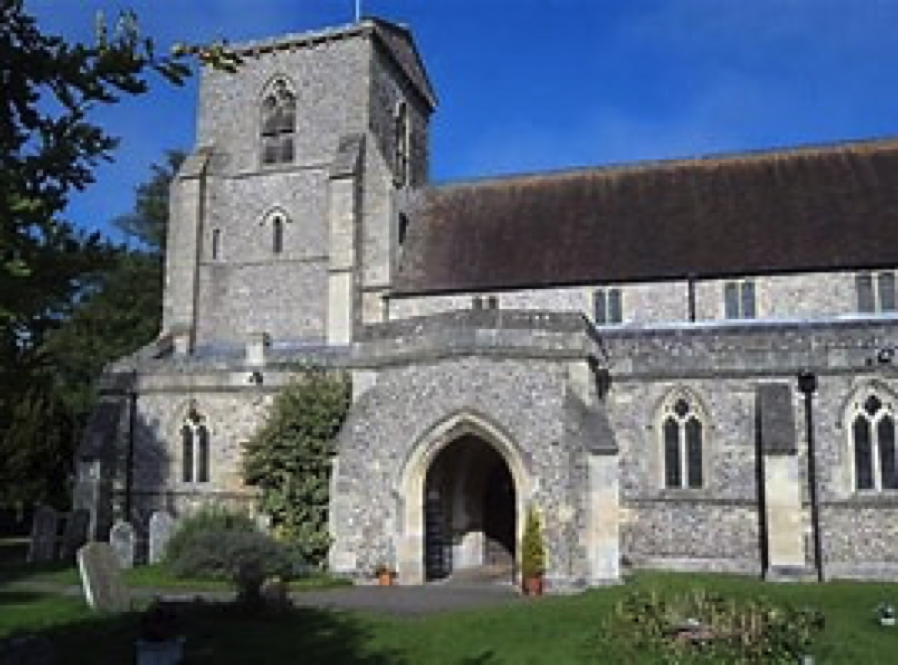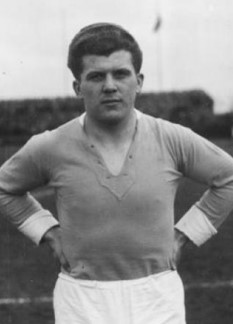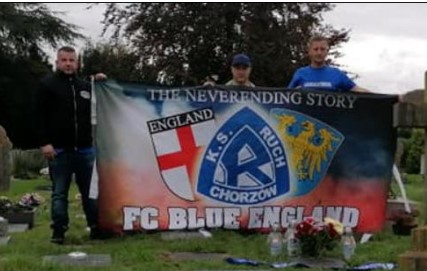Chinnor
St Andrews Chinnor
A church has stood on this land since Saxon times
The chancel was entirely rebuilt, the tower was made higher and the porch was built. The aisles were widened, given new windows, and extended westwards to flank either side of the tower. A rood screen was installed between the chancel and nave. The chancel and high altar were dedicated in 1326, which may therefore have been the year that the remodellingwas completed. The high-pitched 13th century nave roof was replaced, probably later in the 14th century, with a Perpendicular Gothic clerestory and low-pitched roof.
The architect Richard Pace designed St Andrew's Rectory, which was built in 1813. St Andrew's was restored in 1863–66. The plans were by the architect Edward Banks of Wolverhampton but were modified by the OxfordDiocesan architect G.E. Street and the Oxford architectural writer and publisher J.H. Parker. The nave roof was restored to a high pitch and the chancel was raised above the nave. Clayton and Bell restored the mediaeval stained glass and added a new east window. The 14th century font was replaced with a new one of Caen stone. The 14th century rood screen was reduced in height. The chancel, nave and aisles were entirely refurnished. However, in 1930 the original font was retrieved and reinstalled.
In the south aisle is a carved recumbent effigy of a knight of about 1270 or 1300. St Andrew's has also one of the largest collections of monumental brasses in the country. Most are 14th or 15th century but there are also later brasses commemorating a churchwarden (died 1899) and his wife, and two soldiers killed in the First World War.
By 1558 St Andrew's had a ring of four bells and a Sanctus bell.In the succeeding century all were replaced and the ring was increased to five. William Knight II of Reading cast the oldest bell in about 1586. Further bells were cast by Henry Knight I in 1620, Ellis Knight I in 1635,and Henry Knight II in 1663.A tenor bell was cast in 1651, but in 1864 it was recast as two smaller bells increasing the ring to six. In 1965 John Taylor& Co of Loughborough cast a new Sanctus bell and in 1969 the same company cast a new treble and second bell to replace the two 1864 bells.
St Andrew's parish is now part of the Benefice of Chinnor, Sydenham, Aston Rowant and Crowell.
The Thornhill cartoons - St Andrew's is famous for Sir James Thornhills sketches of Stains which became the template for the reconstructed Rose stained glass window in Westminster Abbey. The story as we know

St Andrew's church

St Andrew's monumental brasses

The churchyard at St Andrews Chinnor
Mass Grave
Discoveries are still being uncovered regarding what is known to residents as the "Plague Pit" in the churchyard at St. Andrews.
Excavation of mass grave Chinnor churchyard 2021
During an analysis of Chinnor burial records it was noted that there were four groups of people who had died due to an outbreak of infection or were unable to pay the burial fee. These were examined in connection with an area in Chinnor church yard identified locally as a mass grave possibly a plague pit or paupers’ grave. In April 2021 a survey was carried out by Nigel Peters on behalf of SOArchso.
In December 2021 Nigel and SOArchso with specialised equipment carried out a further survey of the "plague pit" the results of which will be sent for analysis and the conclusions being sent to all parties. A further survey is due to be carried out in the spring / summer of 2024

Edmund Giemza 1912 - 1994

FC Blue England

The grave of Edmund Giemza
Edmund Giemza 1912 - 1994
Edmund fled Poland in World War 11 to settle in Chinnor - this is his story and where he is burried in the St Andrew's churchyard.
Edmund Giemza played for the Polish national football team between 1933 and 1939.
At the age of 21, he made his Polish debut against Belgium and was in the squad that represented Poland in the 1938 World Cup in France. Edmund played for Ruch Chorzów football team and won the polish league championship in 1933, 1934, 1935, 1936 and 1938.
He is known as one of the three best players to represent Poland in his era and is cherished as a Ruch Chorzów legend.
Edmund’s grave is frequently visited by members of Blue England, a group of Ruch Chorzów supporters who live in England, who come to pay their respects. Once a year a large group of Blue England members visit Edmund’s grave, laying scarf’s, shirts and Ruch Chorzów emblems upon it and remember one of Ruch Chorzów’s most revered and famous football legends.
The group then visit the Crown pub to share a drink in his memory. A Ruch Chorzów scarf with Edmund's photo can be found decorating the wall of the Crown’s sports bar.
Edmund was born in Ruda Śląska, in Poland, in 1912, and fled to England during World War II, settling in Chinnor. Edmund's profession, in his younger years in Poland, was a hairdresser and he continued cutting hair in Chinnor until his retirement. Edmund died in September 1994 and now rests in Chinnor’s churchyard. Stefan Giemza, grandson of Edmund Giemza
Burial Records
Analysis of the burial records indicated four groups of people who may have been buried there:
1783 3d. was levied per burial and between 1783-87 4 residents were recorded in the burial records as not paying this levy,3 women and 1 man
1783 Mary Towerton, Elizabeth Shrimpton, Robert Keene,
1787, Mary Hatocks.
1791-94 13 adult women, 5 adult men and 1 female infant designated paupers are recorded.
Mary Burton 50, Richard Coles 66, Ann Bricknell -, Nat. Sewell 66, Ann Willkinson 21, Thomas Witney 13, Hanna Stevens 60, Mary Woodroffe 60, Joseph Coxe 70, Sarah Stevens infant, Francis , Dolly Betteridge, widow Sewel, Sarah Wallington 37, Sarah Cox 26, Edward Atkins 42, Mary Stacey 78, Sarah Crook 50, Hannah Smith 30, Mary Robert s 79.
1801-2 there was an outbreak of smallpox resulting in:
1801 1 male infant George West.
1802 1 male infant, 1 male adult, 2 female adults, 1 female child age 3.
Henry Perkins infant, Edmund Witney 55, Mary Keen 70, Sarah Stone 61, Hannah Folley age 3.
1844 6 residents from Chinnor who lived in the Workhouse were buried in Chinnor: 2 adult males, 1 infant male, 2 adult females, 1 child female 3 months. John Smith 85, Jane Perkins 63, Edmund Smith 26, Jane Ratley 3 months, Mary Smith 73, William Cox infant.
Documents
Specialist Survey of Chinnor Churchyard 2021
Update on the Specialist Survey in the Churchyard 2024: Nigel Peters as part of SOAG and students from Reading Universary supervised by Dr Robert Fry.